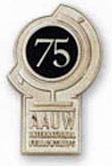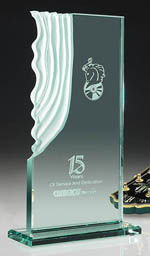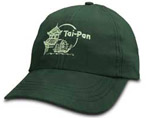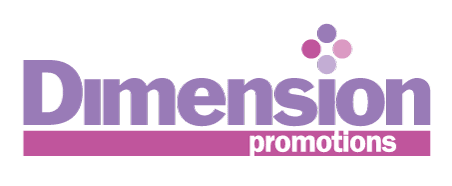FAQs: Terms Used in Customization
Die-Struck — A heavy-gauge metal die is used to stamp the image into the item. Typically used for high-quality lapel pins: antique finish, two-tone high polish, or cloisonné color fill. This method allows for both fine detail and small type size.

Since lapel pins are usually about 1" in size (+/- .25"), art should be provided at 200%–300% size, in one-color format. All black areas of the artwork will be raised and polished.
For cloisonné, specify colors to fill in recessed areas. For high polish or antique finish, recessed areas will have a matte or pebble finish. At right, cloisonné is black area.
Digital printing — Similar to litho printing in terms of results, this method offers full-color printing at a lower price, and faster turnaround times for smaller quantities. Celluloid buttons are a prime candidate for this process.
Embossing/debossing — An image is pressed into the product (debossed), or up from the reverse side (embossed), using heat and high pressure. This process is used on leather, vinyl and also on some fabrics. It is limited to line art and type only. No screens or halftones are possible.
Embroidery — A design is stitched into the material using computer-controlled equipment. This process is most often associated with wearables, but is also used on bags, totes and other textile items. Fine details and small print cannot be reproduced. All text must be at least .25" tall, even larger if you are using serif fonts.
Embroidery is priced by coverage area ("stitch count"), not the number of colors, so a small five-color design will cost less than a large, two-color design.
Engraving — While still done with diamond-tipped metal tools that gouge the surface, engraving is now done mostly with computer-guided lasers that burn into the surface of the material. Wood and metal items are prime candidates for this method. Line art and type only.

Etching — Typically, the image area is masked off, then bombarded with abrasive sand that gouges into the surface. There are other variations of the process, including the use of chemicals. It is most commonly applied to crystal and glass items, but can be used on marble and Lucite as well. In some cases, it is possible to add color fill, further enhancing the image. But remember: line art and type only; small type will not show up. At right, the horse logo and the "15 years" type below it are etched.
Flexography — A method of rotary printing that employs quick-drying inks and flexible raised relief image plates. Used almost exclusively for printing labels, in particular paper labels supplied on rolls or sheets. Multi-color designs work well with this print method. Check on line screen density before preparing your artwork if there are halftones or percentage screens involved. In some cases, it is possible to achieve up to a 150-line screen.
Hot Stamping/Foil Stamping — An image is pressed down into the material with a metal die, fusing a colored film to the material in the process. Though similar to debossing, this method offers color in the image area. In addition to leather and vinyl items, foil-stamping is also used to print ribbons and seals. Line art and type only.
Litho Printing — Although it is most often associated with printing on paper, specialized facilities are now utilizing this method for plastic items such as membership cards and refrigerator magnets. The best-known item printed using this method are Post-It® notes. Litho printing allows for high definition and precise color registration.
Pad Printing — The image is printed using a flexible rubber pad. This process is used on many products made of plastic, or those with curved surfaces. It does not allow for percentage screens or halftones, and is often limited to one color.
Because of the wide range of products imprinted with this process, try to use a one-color, line art version of your designs, if your client is likely to use the design on multiple products.
Photo Process — An image is reproduced photographically and sealed behind a laminated surface or epoxy dome. Used almost exclusively for high-definition lapel pins and slant-top or dome-top pens, this process allows for full color or multicolor prints and provides exceptional reproduction of fine details on a small scale.

Screen Printing — Ink is forced through a fine mesh fabric screen, which is blocked except in the image area. This process is most often associated with fabric items, such as T-shirts and tote bags, but is also used on a variety of plastic products.
At right, screen printing on a hat.
In screen printing, percentage screens need to be very coarse. Small type will likely fill in and be illegible.
Sublimation or Heat Transfer — The image is printed on a special paper and then transferred to the product using special processes, usually involving heat. This method is used on products such as mouse pads, mugs, and even T-shirts. Its greatest benefit is that it reproduces four-color process images well, without registration variance problems. For the best image reproduction, it is important to make good contrasts in the design.
If there's a process not listed here or a new process you're interested in, contact us via email or call 703.521.4843 and we'll be happy to help.
